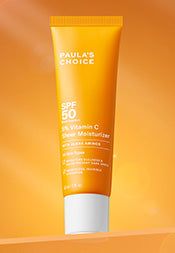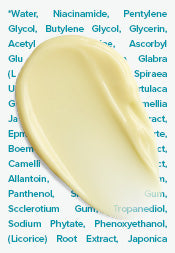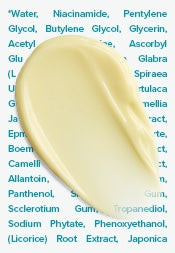What Are Under Eye Bags?
What Are Under Eye Bags—and What Causes Them?
Under eye bags are a stubborn, visible bulge beneath one or both eyes. They tend to feel “squishy” when touched and look worse if you habitually rub your eyes.
For most people, under eye bags are the same as occasional bulgy-looking eyes, but research on what causes these concerns shows they differ. Bloated under eyes can occur at any age and are typically caused by allergies, diets that include too much salt or alcohol, or sleeping positions. For this type of under eye bags, eye cream may help minimise the look.
In contrast, true under eye bags tend to occur as we age. The fat pads beneath the eyes shift downward, dropping beneath and protruding from the immediate under eye area. The result is puffiness that won’t go away no matter what eye bag remedy or treatment you try.
What Are the Causes of Under Eye Bags?
When we’re young, the fat pads beneath the eyes are held securely in place. Ageing, sun damage, and gravity cause the ligaments that normally anchor the fat pads in place to push outward, similar to a hernia beneath the skin.
This shift of the fat pads usually happens gradually, but some people experience a sudden onset. In some cases, the under eye bags become larger, often bulging out over the top of the cheekbones (a type of eye bag known as a festoon or malar bag) before shrinking back to their normal size. This change in size and appearance is due to fluid retention, such as those brought about by allergies, sinus issues, or bad habits like smoking—but genetics can also play a role.
Under eye bags can look worse when the skin begins to sag and become thinner from sun damage — one more reason to protect eye-area skin with sunscreen for the face and sunglasses all year long.
How to Reduce Eye Bags?
You’ve likely tried under eye bag home remedies or store-bought eye creams claiming to eliminate the issue, only to find they didn’t work well, if at all, no matter how much they cost. Sadly, remedies for under eye bags are not to be found in stores, on infomercials or home shopping channels, or in any DIY recipe.
Some under eye bag remedies might temporarily tighten the skin or make it feel tighter or possibly constricted, which isn’t good for the skin. However, their effects are entirely superficial and short-lived. That’s because, despite the tempting claims, topical products cannot address what’s happening beneath the skin to cause the under eye bags—only cosmetic surgery can do that.
The specific surgical procedure to fix under eye bags is known as blepharoplasty. It's among the most common surgeries performed today because it literally removes under eye bags. Blepharoplasty can be performed on both the upper and lower eyelid areas. If your only concern is bags under the eyes, you would have a lower blepharoplasty. In this procedure, a surgeon uses one of two primary methods to access the drooping fat pads and supportive tissue; both methods leave only tiny, discrete scars.
In some cases, excess fat and skin are removed before the remaining fat pad is secured back into its original place. For younger patients, it’s typically a much simpler process of repositioning and securing the fat pad to keep it from poaching beneath the eye. After a brief recovery period, the under eye bags are gone. We repeat: Gone!
Learn more about eye bags.
Shop Paula’s Choice effective eye care for brighter, younger-looking undereye.
References for this information:
Seminars in Plastic Surgery, February 2017, pages 46–50
Facial Plastic Surgery Clinics of North America, May 2016, pages 129–138
Journal of Cutaneous and Aesthetic Surgery, April-June 2016, pages 61–64
BioMed Research International, February 2015, ePublication
Aesthetic Surgery Journal, February 2014, pages 235–238
Clinical, Cosmetic, and Investigational Dermatology, September 2013, pages 221–232
Plastic Reconstructive Surgery Global Open, April 2013, pages e8–e15











